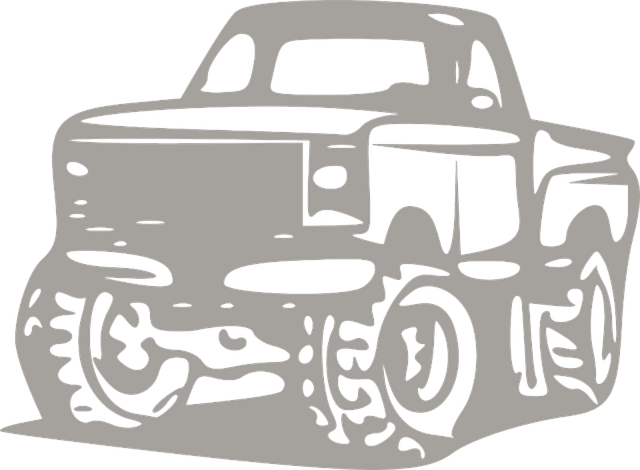In the Rio Grande Valley (RGV), hitch balls are vital for secure towing of trailers on diverse terrains, catering to various 4×4 owner needs from personal modifications to commercial cargo transport. With different sizes and styles, selecting the right hitch ball is crucial for safe and seamless off-road adventures. Regular inspection, maintenance, and replacement ensure optimal performance and stability during RGV's challenging landscapes, making hitch balls indispensable accessories for 4×4 repairs.
“Hitch balls are essential components in the world of 4×4 repairs, particularly for RV owners. This article provides a comprehensive guide to understanding these versatile tools, offering a basic overview for beginners. We explore their role in enhancing 4×4 performance, especially in RVs, and delve into various types suitable for different applications.
Furthermore, safety is paramount; we cover critical considerations and maintenance tips to ensure hitch balls remain reliable, ensuring a smooth and secure towing experience.”
- Understanding Hitch Balls: A Basic Overview
- The Role of Hitch Balls in 4×4 Repairs in RGV
- Types and Applications of Hitch Balls
- Safety Considerations and Maintenance Tips for Hitch Balls
Understanding Hitch Balls: A Basic Overview

Hitch balls are an essential accessory for anyone owning a 4×4 in the RGV (Rio Grande Valley) or beyond. These sturdy, ball-shaped devices serve as attachment points for towing trailers, allowing vehicles to transport various loads securely. Understanding how hitch balls work is crucial for 4×4 owners, especially when navigating challenging terrain.
In basic terms, a hitch ball is designed to fit into a trailer’s coupling, providing a stable connection between the vehicle and its cargo. The RGV’s diverse landscapes, ranging from rugged mountains to muddy riverbeds, demand reliable towing solutions. Hitch balls come in different sizes and styles, catering to various trailer types and weight capacities. Choosing the right hitch ball is vital for ensuring safety during transit, especially when tackling the region’s demanding 4×4 trails.
The Role of Hitch Balls in 4×4 Repairs in RGV

In the realm of 4×4 repairs in RGV (all-terrain vehicles), hitch balls play a pivotal role, acting as indispensable components for attaching trailers and accessories. These robust metal spheres serve as a secure connection point, allowing owners to transport cargo or enhance their vehicle’s capabilities. When a 4×4 needs repair, especially in rugged terrain, having reliable hitch balls is crucial for ensuring safe towing and carrying of additional equipment.
For RGV owners, understanding the importance of well-maintained hitch balls cannot be overstated. Regular inspection and replacement ensure optimal performance during off-road adventures or routine transport tasks. With their versatile applications, hitch balls are a game-changer in 4×4 repairs, offering both functionality and peace of mind for those navigating challenging terrains with their RGVs.
Types and Applications of Hitch Balls

Hitch balls come in various types, each designed for specific applications. One common category is the receiver hitch ball, which attaches to a vehicle’s receiver hitches, typically found on trucks and SUVs. These are ideal for securing cargo carriers, bike racks, or other accessories for 4×4-repair-rgv enthusiasts who enjoy outdoor adventures. Another type is the mounting plate hitch ball, offering a more universal solution by fitting standard mounting plates, suitable for a broader range of vehicles.
They find applications in various sectors, from personal vehicle modifications to commercial cargo transport. In the former, they enable individuals to enhance their 4×4 capabilities, carrying additional gear for camping or off-roading trips. In the latter, businesses rely on hitch balls to transport goods efficiently, ensuring secure loading and unloading processes. Their versatility makes them a must-have accessory for anyone involved in 4×4 repairs or seeking enhanced towing capacity.
Safety Considerations and Maintenance Tips for Hitch Balls

When it comes to hitch balls, safety is paramount, especially for those frequenting the rugged terrain that 4×4-repair-RGV enthusiasts love. Properly securing your trailer with a well-maintained hitch ball is crucial to prevent accidents and ensure a smooth ride. Always inspect the hitch ball for any signs of damage or wear before each trip; even minor cracks or deformations can compromise stability. Regular cleaning and lubrication are essential maintenance practices that not only prolong the life of your hitch ball but also enhance its performance.
Remember, a well-maintained hitch ball is key to a safe and enjoyable off-road adventure. Keep an eye on any wear and tear, replace parts as needed, and ensure all connections are secure. After all, the strength of your connection depends on the quality of your hitch ball, making regular maintenance a 4×4-repair-RGV owner’s best friend.
Hitch balls are versatile components that play a significant role in 4×4 repairs, particularly in Recreational Vehicle (RGV) maintenance. By understanding their types, applications, and safety considerations, RV owners can ensure efficient and secure towing setups. Incorporating the right hitch balls into your 4×4-repair-RGV regimen not only enhances performance but also contributes to safer driving experiences. Regular maintenance tips, as outlined in this article, are essential for keeping these components in optimal condition.



